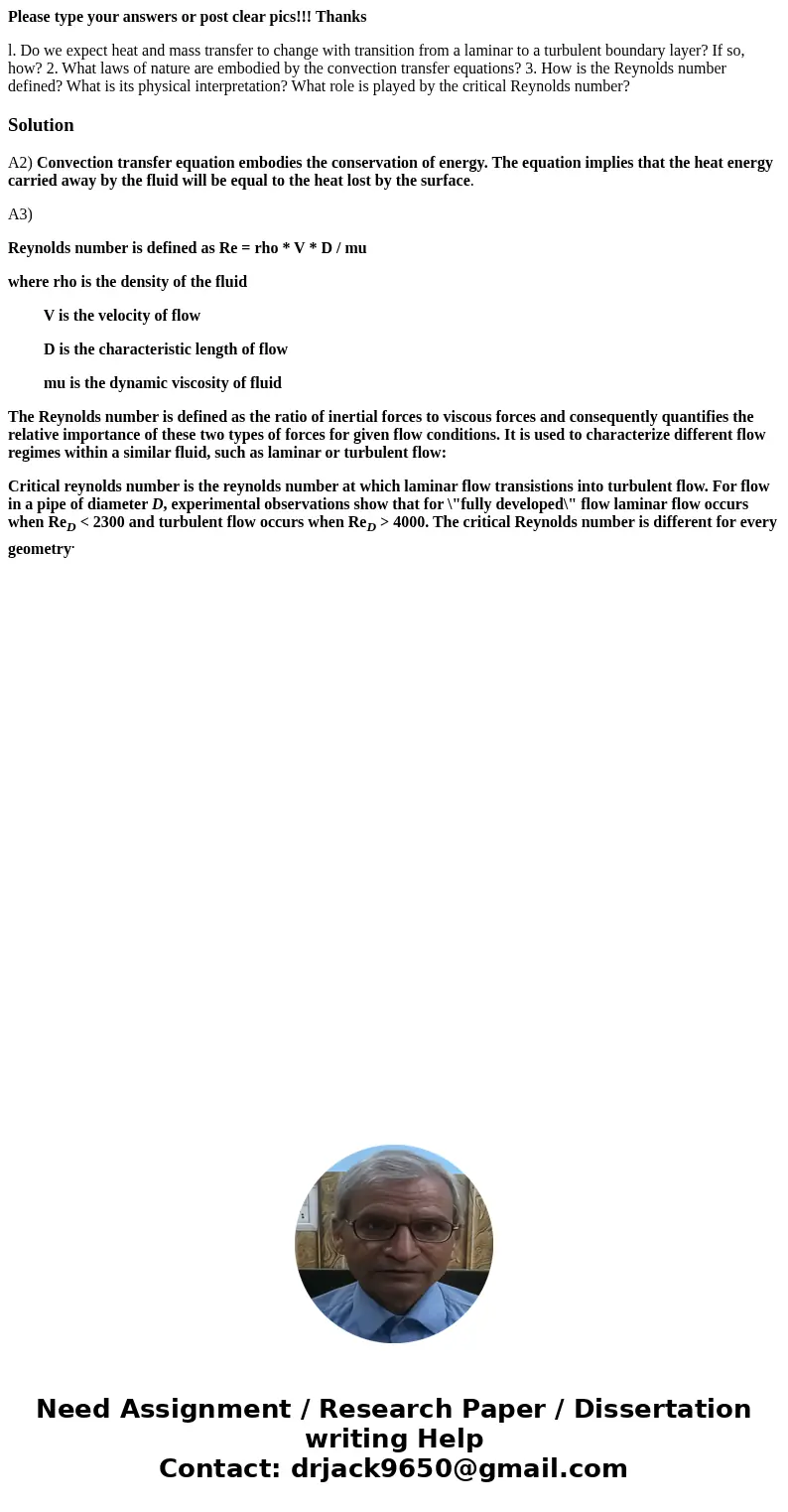Please type your answers or post clear pics Thanks l Do we e
Please type your answers or post clear pics!!! Thanks
l. Do we expect heat and mass transfer to change with transition from a laminar to a turbulent boundary layer? If so, how? 2. What laws of nature are embodied by the convection transfer equations? 3. How is the Reynolds number defined? What is its physical interpretation? What role is played by the critical Reynolds number?Solution
A2) Convection transfer equation embodies the conservation of energy. The equation implies that the heat energy carried away by the fluid will be equal to the heat lost by the surface.
A3)
Reynolds number is defined as Re = rho * V * D / mu
where rho is the density of the fluid
V is the velocity of flow
D is the characteristic length of flow
mu is the dynamic viscosity of fluid
The Reynolds number is defined as the ratio of inertial forces to viscous forces and consequently quantifies the relative importance of these two types of forces for given flow conditions. It is used to characterize different flow regimes within a similar fluid, such as laminar or turbulent flow:
Critical reynolds number is the reynolds number at which laminar flow transistions into turbulent flow. For flow in a pipe of diameter D, experimental observations show that for \"fully developed\" flow laminar flow occurs when ReD < 2300 and turbulent flow occurs when ReD > 4000. The critical Reynolds number is different for every geometry.

 Homework Sourse
Homework Sourse